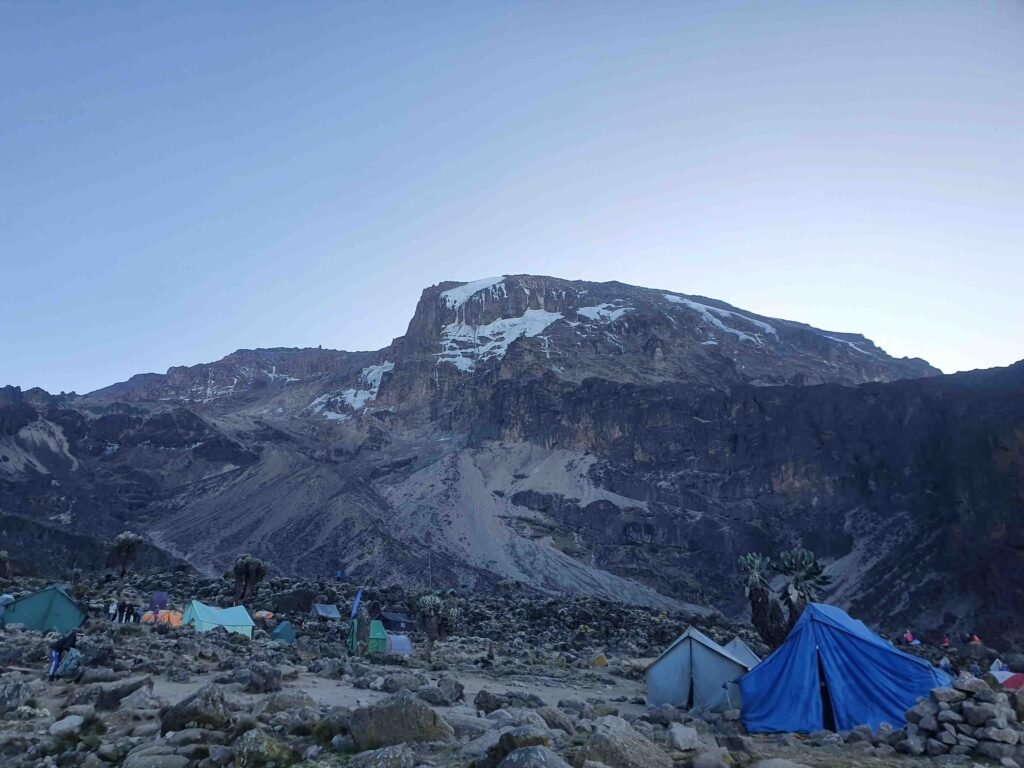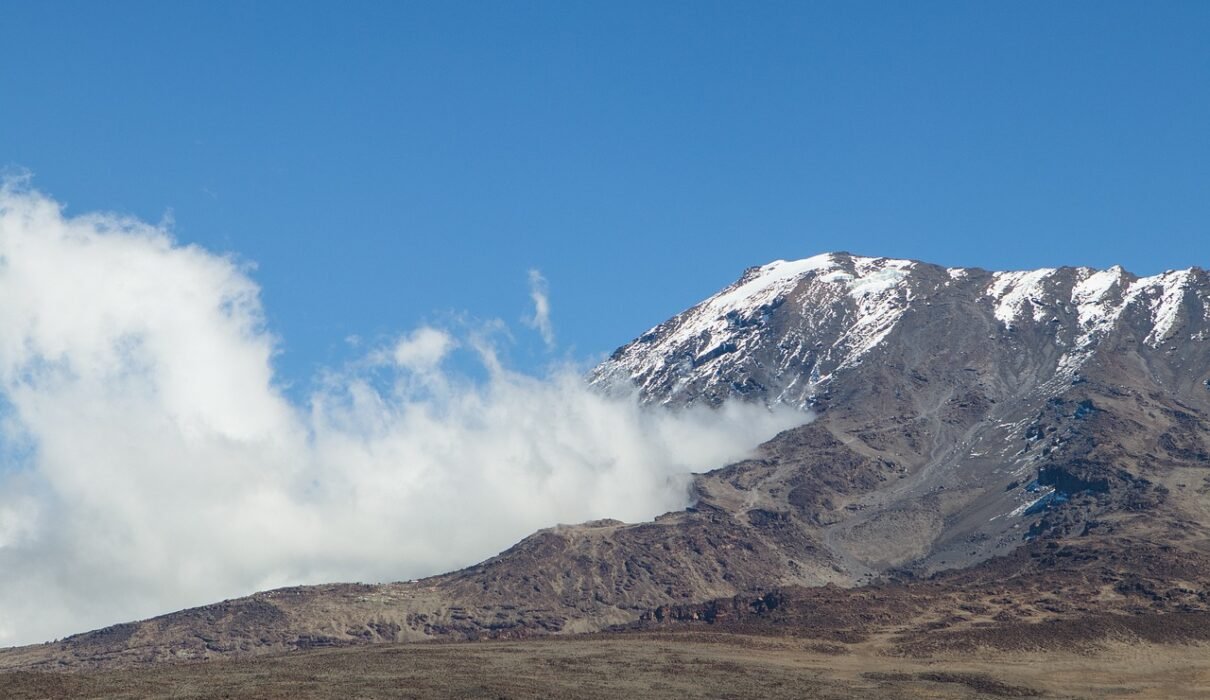When planning a trek to the summit of Mount Kilimanjaro, choosing the right route is key to a successful and enjoyable climb. The Northern Circuit Route is becoming increasingly popular among climbers for its scenic beauty, lower foot traffic, and high success rate. In this article, we’ll explore why the Northern Circuit Route stands out as the best option for reaching Africa’s highest peak.
Learn more about Kilimanjaro routes and expert trekking advice here.

1. Longest Route with the Best Acclimatization
The Northern Circuit Route is the longest route to the summit of Kilimanjaro, spanning 9-10 days. This extended trek offers the best opportunities for acclimatization, allowing your body to adjust to the altitude gradually. With better acclimatization, climbers are less likely to experience altitude sickness, which is the primary reason why many fail to reach the summit.
- Why It’s Important: Gradual ascent leads to a higher success rate in reaching the summit.
- Acclimatization Days: The Northern Circuit includes more rest and acclimatization days compared to other routes.
Discover how acclimatization impacts your Kilimanjaro climb success.
2. Scenic Beauty and Unique Views
One of the standout features of the Northern Circuit Route is the stunning and varied scenery. As you circle around Kilimanjaro, you’ll pass through diverse ecosystems, from rainforests and alpine deserts to moorlands and glaciers. The Northern Circuit offers unique, panoramic views of the Kenyan plains, which are not visible from other Kilimanjaro routes.
- Key Highlights: Views of Kilimanjaro’s northern slopes and the chance to witness incredible sunrises and sunsets.
- Less-Crowded Paths: Enjoy more solitude and unspoiled nature as this route is less frequented by other climbers.
Read more about Kilimanjaro’s stunning landscapes and diverse ecosystems.
3. Highest Summit Success Rate
Thanks to its gradual ascent and ample time for acclimatization, the Northern Circuit Route boasts the highest summit success rate of any Kilimanjaro route. While other routes have success rates as low as 65%, the Northern Circuit offers a much higher rate, with around 90% of climbers successfully reaching Uhuru Peak.
- Why It’s the Best: More time to acclimatize means less risk of altitude sickness, making it the best route for those serious about reaching the summit.
- Who It’s Best For: Ideal for first-time climbers or those worried about altitude issues.
Find out more about the summit success rates of Kilimanjaro routes.
4. Avoid the Crowds
Kilimanjaro’s popular routes, such as the Marangu and Machame routes, often see a high volume of trekkers, especially during peak climbing seasons. In contrast, the Northern Circuit is known for its peaceful and uncrowded paths. If you prefer a quieter, more remote trekking experience, this is the best route to choose.
- What to Expect: Fewer hikers, more serene campsites, and a more intimate connection with the natural surroundings.
- Ideal For: Climbers looking for solitude and a less commercialized trekking experience.
Learn about the best times to climb Kilimanjaro and avoid the crowds.
5. Diverse Wildlife Encounters
The Northern Circuit Route offers some of the best opportunities for spotting wildlife on Kilimanjaro. As you trek through the lower slopes, particularly the rainforest zone, you might encounter blue monkeys, Colobus monkeys, and various bird species. The route’s remoteness makes it a great option for wildlife lovers who want to experience the mountain’s natural biodiversity.
- Wildlife Highlights: Monkeys, antelopes, and a variety of birds in the forested sections.
- Birdwatching: The route is ideal for spotting rare bird species like the Malachite Sunbird and the Hartlaub’s Turaco.
Explore more about the wildlife of Kilimanjaro.
6. A More Challenging Yet Rewarding Adventure
The Northern Circuit is slightly longer and more challenging compared to other Kilimanjaro routes, but that’s what makes it even more rewarding. The route’s extended duration allows for deeper exploration of the mountain’s less-visited areas. Though the trek demands more stamina and commitment, the journey is enriched with breathtaking views and fewer trekkers.
- Difficulty Level: Rated as moderately challenging due to the longer days and remote trails.
- Who It’s For: Trekkers who want a more immersive Kilimanjaro experience without the rush.
Get tips on how to physically prepare for your Kilimanjaro trek.
7. Explore the Shira Plateau and Lava Tower
The Northern Circuit Route takes you across the Shira Plateau, one of the most scenic areas on the mountain. This wide, open landscape offers incredible views of Kilimanjaro’s snow-capped peak. You’ll also pass the Lava Tower, a massive volcanic rock formation where many trekkers stop for acclimatization.
- Shira Plateau: A vast, beautiful plateau that offers a unique perspective of the mountain.
- Lava Tower: A great spot for acclimatization and stunning photographs.
Find out more about the Shira Plateau and its volcanic features.
8. Plenty of Time to Adjust to the Altitude
One of the key benefits of the Northern Circuit Route is that it gives climbers plenty of time to adjust to the altitude. By spending more time trekking and camping at intermediate altitudes, your body can better acclimatize to the thin air, reducing the risk of altitude sickness. This slow and steady ascent is crucial for reaching the summit without health issues.
- More Acclimatization: The longer route means more time at higher altitudes, which is essential for avoiding altitude sickness.
- Rest Days: The itinerary includes rest days at specific altitudes to ensure your body adjusts properly.
Learn why acclimatization is key to a successful Kilimanjaro climb.
9. Northern Circuit: Perfect for Photographers
If you’re a photography enthusiast, the Northern Circuit offers some of the most breathtaking and unique photo opportunities on Kilimanjaro. From the sweeping vistas of the Shira Plateau to the panoramic views of Kibo and the dramatic Lava Tower, every part of the journey is visually stunning. The route’s remoteness and unspoiled landscapes make it ideal for capturing the beauty of Kilimanjaro without crowds.
- Photography Highlights: Stunning sunrise and sunset views, dramatic volcanic landscapes, and unique perspectives of Kilimanjaro.
- Best Spots: Shira Plateau, Lava Tower, and the final ascent to Uhuru Peak.
Get photography tips for capturing Kilimanjaro’s beauty.
10. Best Time to Hike the Northern Circuit Route
The Northern Circuit Route can be hiked year-round, but the best time to climb is during the dry seasons: January to March and June to October. These months offer the most stable weather conditions, making it easier to trek without the challenges of heavy rain or muddy paths.
- Best Climbing Seasons: January to March (fewer climbers, cooler weather) and June to October (most popular, dry weather).
- Weather Conditions: Expect clear skies, warm days, and chilly nights at higher elevations.
Learn more about the best times to climb Kilimanjaro.
Conclusion
The Northern Circuit Route is the ultimate choice for climbers seeking a scenic, less-crowded, and highly successful path to Kilimanjaro’s summit. With ample time for acclimatization, stunning landscapes, and unique wildlife encounters, this route offers a truly unforgettable experience. If you’re serious about reaching the Roof of Africa and want to enjoy the journey, the Northern Circuit should be at the top of your list.
For more details on planning your Northern Circuit Kilimanjaro climb, visit Kilimanjaro Climb Specialist or Eddy Tours & Safaris.

